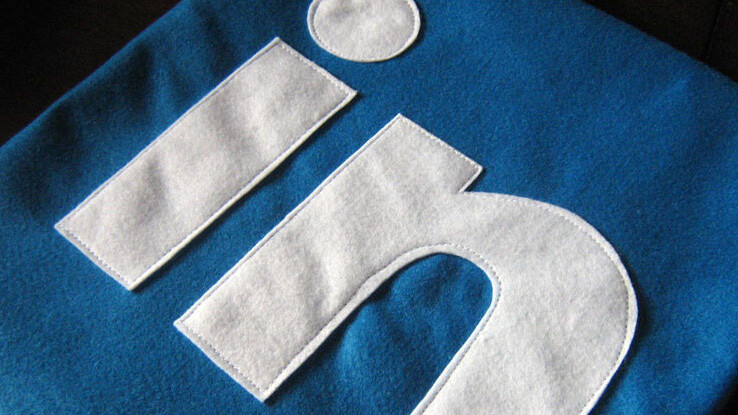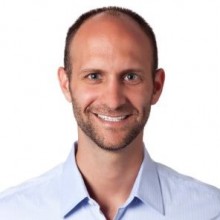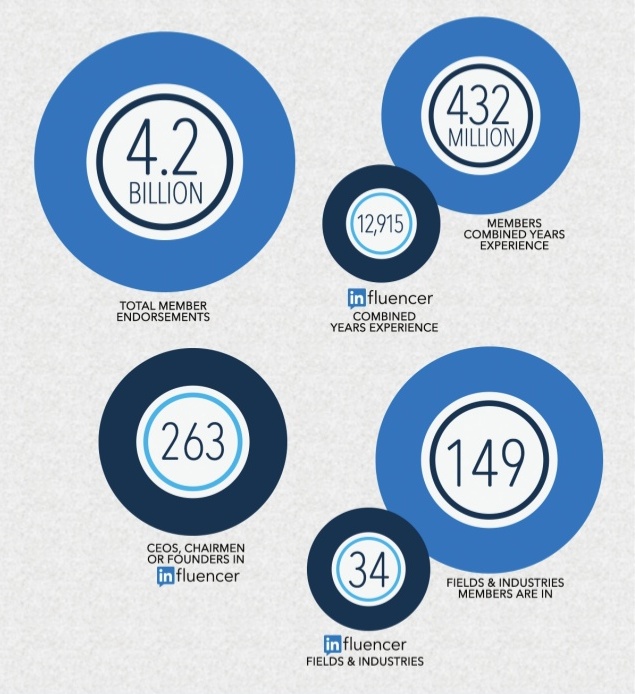
As we’ve peeked behind the curtain of LinkedIn’s engineering endeavors, we’ve looked at the company’s open source initiatives and its mobilization efforts. For the final installment of our three-part series, we’ll dig into the publishing side of LinkedIn.
LinkedIn’s content arm is divided into four key parts: sharing, groups, the publishing platform, and Pulse. Sharing involves curating professional content on the service, while groups are a place for professionals to share knowledge. The publishing platform started out with just influencers, but has since opened up to ordinary members, with an eye to producing new content with unique insights to build an audience. Finally, Pulse covers how LinkedIn distributes these news, shares and posts to LinkedIn’s member base.
Erran Berger, LinkedIn’s Senior Director of Engineering – Content, walked us through how the team is approaching its content play.
This interview has been edited for clarity and length.
TNW: Can you start with an overview of content on LinkedIn and how publishing fits in?
 Berger: The primary value proposition that we want to give our members is helping them find professional insights and make them better at what they do and help them drive professional conversations they’re having at work or outside of work.
Berger: The primary value proposition that we want to give our members is helping them find professional insights and make them better at what they do and help them drive professional conversations they’re having at work or outside of work.
For example, an engineer reading the latest engineering blog by James Gosling. There’s this really influential person in my industry and he has a bunch of really interesting things to say. Another example is the professional conversation, tracking the trends in my industry.
When content comes into LinkedIn, we’re focused on understanding what it’s about and distributing it to members in a highly personalized and relevant way.
If you’re an employment attorney and there is some monumental ruling and labor law in California, and somebody has a take on it, that content shows up in your feed, in the Pulse app and in your email.
The best way to kick off the discussion is if I gave an overview of the content strategy at LinkedIn and specifically the piece that publishing plays.
We have on LinkedIn 300 million members who are consuming professional content every day. Not only on LinkedIn, in fact a lot of what they’re consuming is outside of LinkedIn, but this is a behavior that they’re doing every day. They are, in terms of an audience for publishers, a really, really high-quality audience.
On the other end of the spectrum, we have individuals who are publishing content on a variety of different places and have to work hard to get distribution. They have to promote their content via social networks, have to develop their own SEO – all of the things you can imagine that anyone who has their own blog has to do.
The power of the publishing platform is those individuals who have something to say have this platform and LinkedIn can take care of the distribution to an audience of high-quality people who we know are seeking this content anyway.
The value to the publisher is, “Hey, we can get you eyeballs and we can get you really good engagement.” The value to the content consumer is, “Hey, you don’t need to go anywhere else because a lot of the really influential people in your industry are already on LinkedIn and they’re writing, so you should just consume it here.”
That’s the first piece. The second piece is that, for our members, showing off their unique skills and insights is something that doesn’t always come through on their profiles.
I have my work experience, and I have a paragraph about what I did at LinkedIn, but it doesn’t talk about my perspective on engineering culture or how I would build an engineering organization, or how I think about career planning for engineers.
And so, what the publishing platform allows me to do, even if I don’t want to build an audience, is tell those more dynamic parts of who I am as a professional and have that be persistent and evergreen on my profile as something that augments my professional identity.
That’s something that doesn’t exist anywhere else on the internet. We blend this professional identity and a resume with the depth of insight that can be attributed to my professional identity. We’ve found that as we’ve opened up the publishing platform, this is something that has taken off.
We have a lot of people who are posting just a couple times to differentiate themselves from everybody else who has the same title. What we’ve found is that those people, their posts flow through the same viral loops and distribution channels that the audience builders’ posts flow.
When they write about engineering and we understand what it’s about and distribute it to millions of engineers on LinkedIn, all of a sudden they’ve got a lot of eyeballs and a great discussion around it. They’re like, “Hey, I knew I had cool things to say, I didn’t know that people were interested in it,” and they become repeat posters.
We want to create the professional profile of record. As [LinkedIn CEO Jeff Weiner] says, “We want to be the definitive professional publishing platform.”
That’s the very succinct way of stating what I said at the beginning: 300 million professionals who are seeking content, and publishers who really want a high quality audience – bringing those two together onto LinkedIn.
Because of our distribution, publishers who are writing about professional content shouldn’t have to go anywhere else to publish.
What’s your strategy for getting people to publish original content?
The funnel end into this viral loop is publishing, getting them to publish the first time and then getting them to be repeat posters. The way we get them to be repeat posters is first we maximize their distribution. It comes in the form of a bunch of different things: one, to your network; two, to your followers; three, SEO.
We’re one of the best in the industry in SEO, between what we do with Slideshare and what we do with profiles. We’re doing the same thing with articles. So when you publish something on LinkedIn, we will get it indexed by all the major search engines and you will get a lot of traffic through that.
The fourth distribution angle is classification and relevance. When you write about a specific topic, we understand what the topic is and we distribute it directly to the feeds and the email inboxes of all the people that it is relevant to in a highly personalized way.
Once we get that distribution, once we get those eyeballs, how do we convert those eyeballs into likes, comments, reshares, things that really make your content go viral? We give the author feedback about how their post is doing.
If we can optimize the distribution and the engagement is high quality, we can show you how many comments and shares you’re getting. Because of all the profile data, we can give you pretty interesting analytics about who the people are that are looking at your profile; how they’re engaging with it; what it meant for your profile page views; how many profile page views you got as a result of the post; how many connection requests you got; and how many followers you accumulated with your most recent posts.

All of those things, that feedback loop, tie right back into posting and getting somebody to post again. We know that if we can close that feedback loop, we will get a ton of liquidity in terms of posts flowing and a ton of really high-quality content that doesn’t exist anywhere else on the internet for people to consume.
To circle back on a few points, especially on the distribution side: one of the big pieces in driving followership for our members who are posting, and especially those that are trying to build their audiences, is we have a ton of data about what our members’ job functions are, what their skills are, what their professional interests are, where they work, etc. We can use all of those signals to drive recommendations for them on who to follow.
If we notice that you’re publishing a bunch of posts on technology and we see your posts are getting some good traction so clearly you have high-quality things to say, we can start recommending you in our recommendation algorithm. For example, when new members sign up to LinkedIn, we suggest people for them to follow.
The thing that makes us unique is we have that profile data to connect the publisher and what they’re writing about to the member and the profile data that we have about them. So that’s one big differentiator for us.
Given the goal to be the definitive publishing platform, how do you position what you’re doing on the publishing side against the knowledge base that Quora is building up?
I think that they’re different products. The way I think of the LinkedIn publishing platform is we have members who have something to say and knowledge to share that isn’t addressing necessarily a specific topic.
Whereas, Quora and other platforms for professional discussions and questions are very much for people seeking knowledge and seeking specific things, there is specific intent there. That’s how I would differentiate it.
The other thing again, the big differentiator for us is the 300 million members whose profile data we have. There’s an element of serendipity there in terms of the recommendations we can give them.
The intent is much more content consumption without a targeted purpose. With Quora, I go there to ask a question or learn something very, very specific, as opposed to consuming content in my industry and my profession that is maybe a little bit serendipitous and less targeted.
For the person doing the writing, it’s also persistent and part of their identity. It’s a part of their profile and portfolio.
For somebody who’s finding you on LinkedIn, whoever that is, whether it’s somebody who’s looking to connect with you on a business opportunity, or it’s a recruiter, having a post on your profile that shows the depth of your expertise, especially if you’ve gotten a lot of engagement with those posts, is something that really sets you apart from the crowd of other like people.
That piece of it is something that is very unique to LinkedIn.
A lot of LinkedIn members view the service as a place to go only when they’re looking for a job or cleaning up their resume. How does publishing fit into making your members daily active members?
The goal of our content products and specifically the publishing platform is to be that daily organic use case. Professionals are consuming professional content on the Internet every day.
We believe that because of that high-quality audience – those 300 million members – publishers will come to LinkedIn to publish. Once it’s there and it’s high-quality content, then members are going to realize that, “Hey, LinkedIn has a ton of really insightful stuff that helps me become a better professional,” and content really is that daily use case.
The whole mission of LinkedIn is to make professionals better at what they do and content is the foundation of that mission. The reason professionals are consuming content on a regular basis is to be better at what they do. Content’s goals are very much in line with LinkedIn’s goals and what professionals are doing on a daily basis.
Related: LinkedIn: The evolution of a publishing platform
Featured image credit: Coletivo Mambembe / Flickr
Get the TNW newsletter
Get the most important tech news in your inbox each week.




